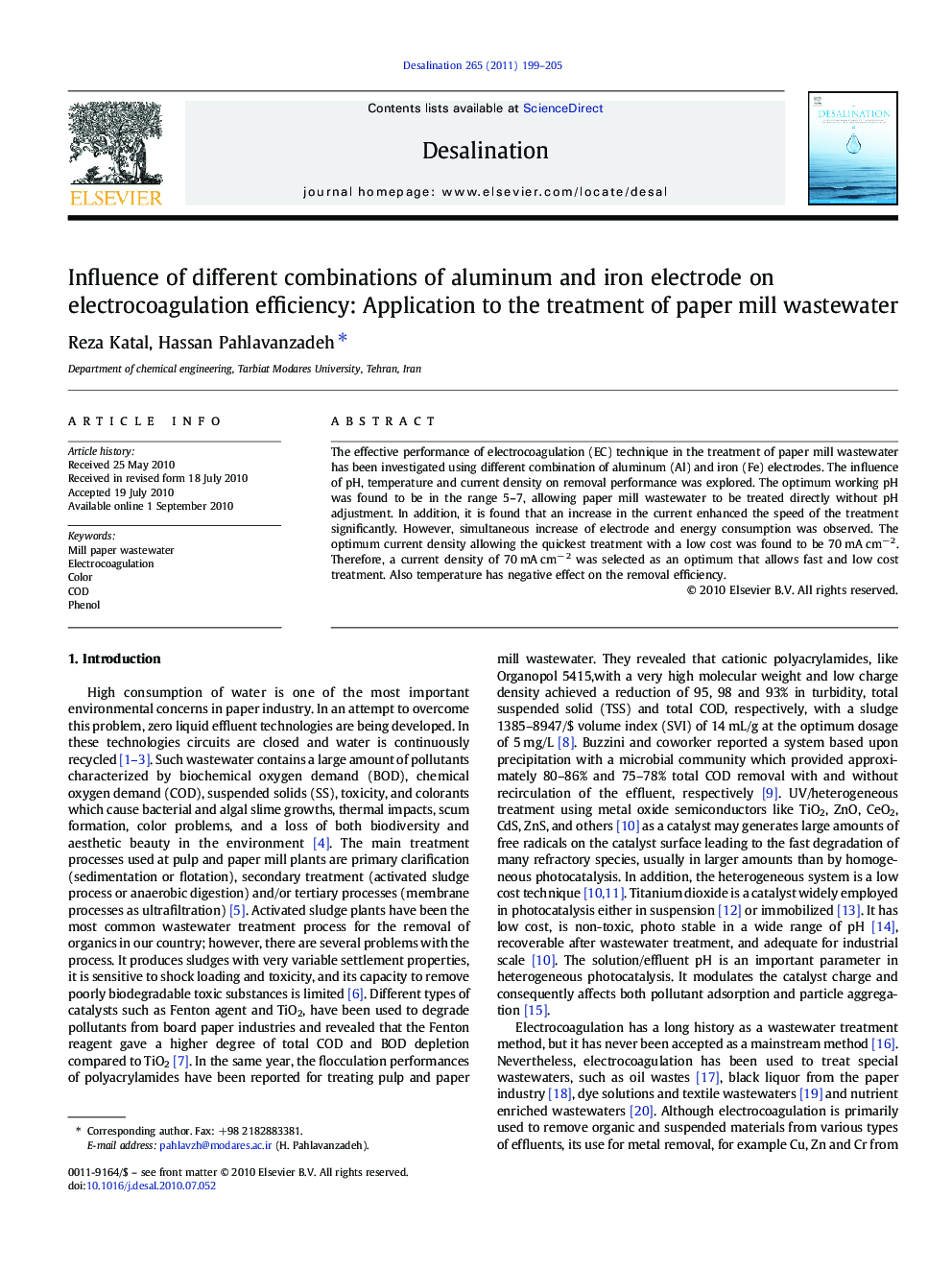| Article ID | Journal | Published Year | Pages | File Type |
|---|---|---|---|---|
| 625382 | Desalination | 2011 | 7 Pages |
Abstract
The effective performance of electrocoagulation (EC) technique in the treatment of paper mill wastewater has been investigated using different combination of aluminum (Al) and iron (Fe) electrodes. The influence of pH, temperature and current density on removal performance was explored. The optimum working pH was found to be in the range 5-7, allowing paper mill wastewater to be treated directly without pH adjustment. In addition, it is found that an increase in the current enhanced the speed of the treatment significantly. However, simultaneous increase of electrode and energy consumption was observed. The optimum current density allowing the quickest treatment with a low cost was found to be 70 mA cmâ 2. Therefore, a current density of 70 mA cmâ 2 was selected as an optimum that allows fast and low cost treatment. Also temperature has negative effect on the removal efficiency.
Keywords
Related Topics
Physical Sciences and Engineering
Chemical Engineering
Filtration and Separation
Authors
Reza Katal, Hassan Pahlavanzadeh,
